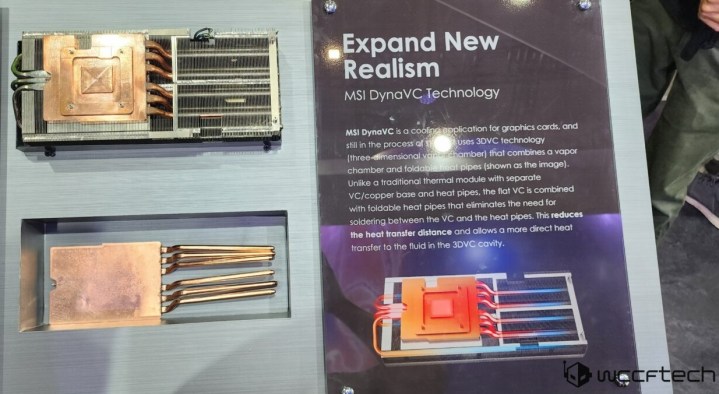
As some of the best graphics cards only get bigger and bigger, manufacturers continuously need to come up with new cooling solutions that can keep the temperatures at bay. To that end, MSI has just unveiled a few of its latest coolers during Computex 2023.
We’ve got some innovative options here, such as a bimetallic fin array, an integrated All-In-One (AIO) cooler, and a 3D vapor chamber. While these new designs could lower GPU temps by up to 10 degrees Celsius, that kind of cooling power might come at a pretty high price, and that also includes the cost of buying an insanely good power supply.
As reported by Wccftech, MSI had a lot to show off during this year’s Computex as far as cooling goes. Coming up first we have a massive RTX 4090 graphics card that takes up 4.2 slots. This GPU comes equipped with MSI’s new prototype cooling solution called Dynamic Bimetallic Fins. This isn’t a card MSI will actually produce, though. It’s a concept that MSI says will be used for “next-gen” graphics cards.
In this design, MSI uses two aluminum fins and a copper sheet to create fins that are around three to four times thicker than what you’d see in a typical cooling solution. The memory dies are attached to the copper fins, but the GPU itself is placed underneath the core pipe. The thermal conductivity between the two materials results in improved heat dissipation. PCGamer quotes MSI as it estimates that this type of cooler might drop the temps by up to 3 degrees Celsius. However, it could turn out to be pretty expensive due to the cost of materials and production.
Coming up next is the FusionChill cooler, which is essentially an integrated AIO liquid cooler that’s built into the GPU. Every part of the cooler, including the radiator, is placed within the card’s shroud. MSI adds copper fins on the base to boost cooling efficiency even further, although the end result looks a bit bulky with tubes still sticking out. The cooler comes with a larger radiator that’s connected to a huge water tank. MSI expects this solution to be highly efficient, dropping temperatures by up to 10 degrees Celsius.

MSI is also cooking up a new technology called DynaVC, meaning a 3D vapor chamber. This tech folds the GPU’s vapor chamber and heat pipes into one, eliminating soldering and reducing heat transfer distance. This tech is likely cheaper to make, but certainly nowhere near as efficient as FusionChill.
Lastly, MSI has also introduced a thermoelectric cooler (TEC) called Arctic Blast which features a copper plate built directly on the GPU and video memory, combined with liquid coolant to help the heat escape to a radiator. This could be the strongest concept yet, but Wccftech notes that it has an insane power draw. While the RTX 4090 itself consumes around 450 watts (unless overclocked), the cooler would add an extra 450W, meaning that you’d need to reserve a whopping 900W for just the GPU and its cooler in your next PC build. While the prospect is exciting, that doesn’t seem feasible just yet. Most people would pair such a GPU with a high-end processor, meaning that the power consumption would be off the charts.
It’s unclear when, or if, all of these cooling concepts will make it to the market. Some of them are likely in the works for next-gen cards, but some could appear sooner, perhaps in the RTX 4090 Ti or even just a beefier version of the
Editors' Recommendations
- This mysterious Nvidia GPU is an absolute monstrosity — and we just got another look
- Next-gen Nvidia GPU plans revealed in massive data hack
- Nvidia’s powerful RTX 3090 next-gen graphics cards could cost up to $1,499




